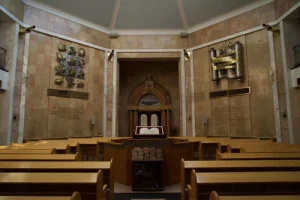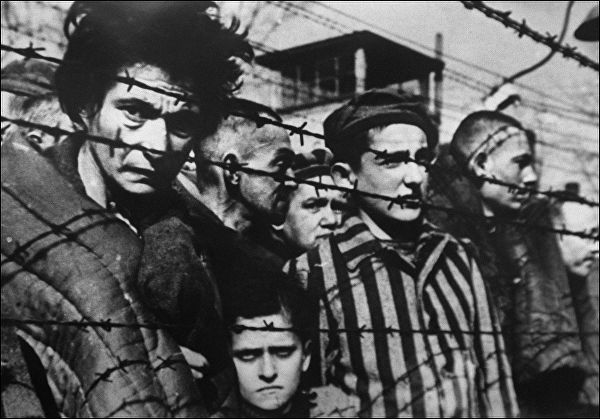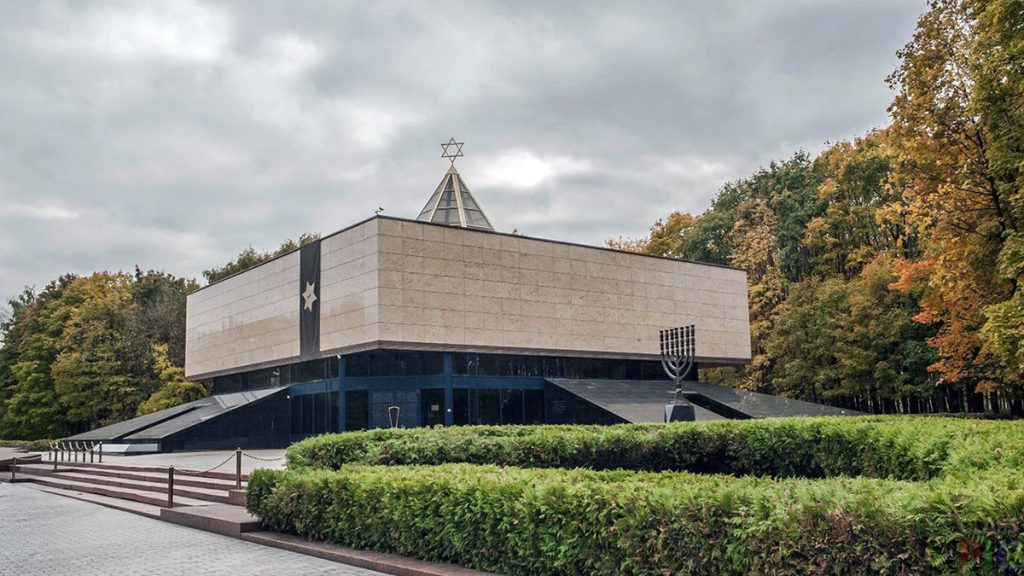Holocaust Memorial Temple
Memorial Synagogue

In Moscow’s Victory Park on Poklonnaya Gora, there is a memorial synagogue that serves as a place of remembrance for the victims of the Holocaust. This sacred space combines a religious sanctuary and a museum honoring the Jewish people who lost their lives during the Second World War. Prayers are offered for those whose lives were tragically ended by Nazi terror, while the historical memory of this dark period is preserved. Visitors are greeted at the entrance by a stone menorah, a symbolic representation of the Jewish faith, embodying light, knowledge, and unity. Made of stone, the menorah serves as a constant reminder of the strength and resilience shown by those who survived the horror of war. The symbolism continues on the synagogue’s exterior, where the Star of David – a prominent symbol of Jewish tradition – is prominently displayed. During the war, the Nazis used this symbol as a means of humiliating Jews. They were forced to wear a yellow star on their clothing, turning them into a target for persecution and abuse. The synagogue, built in 1998, has become not only a place for worship, but also home to the Holocaust Memorial Museum. The museum’s exhibition is a moving and poignant reminder of the immense tragedy that affected millions of Jewish lives. Here, archival documents, photographs, and testimonies from those years are preserved. Among the exhibits is a tombstone that the Nazis used to pave streets in Brest, a symbol of their contempt for and desecration of the memories of the victims. In addition, letters written by prisoners in ghettos and personal belongings from victims of Nazi oppression can be found in the museum. These artifacts tell the stories of people who were doomed to die, yet retained their humanity and desire for freedom despite inhuman suffering. A separate part of the exhibition is dedicated to the heroic deeds of Jews who fought in the Red Army and contributed to the victory over fascism. The building of the synagogue itself is an example of modern architecture that successfully combines traditional elements with innovative approaches. The architects who designed the project were Moshe Zarkhi and Vladimir Budaev, who created a unique structure that seamlessly fits into the ensemble of Victory Park. The interior of the prayer hall, designed by the famous Israeli sculptor Frank Meisler, is admired for its sophistication and is considered one of the finest synagogues in the world. Here, the sacred Torah, more than 150 years old, is read and prayed to in memory of those who lost their lives during the Holocaust. The sacred words of the Torah remind us of the importance of preserving our spiritual traditions and remembering the past. The Memorial Synagogue continues to serve as a centre for spiritual life and historical awareness. It reminds us of the significance of remembering the tragic events of history in order to prevent their recurrence. The Holocaust, not just a chapter of the past, is a lesson for future generations that calls for a fight against hatred, intolerance, and injustice. The synagogue on Poklonnaya Gora stands as a symbol of remembrance, sorrow, and hope, connecting the past with the present in our pursuit of peace and understanding.
Address: Moscow, Kutuzovsky ave., 53

